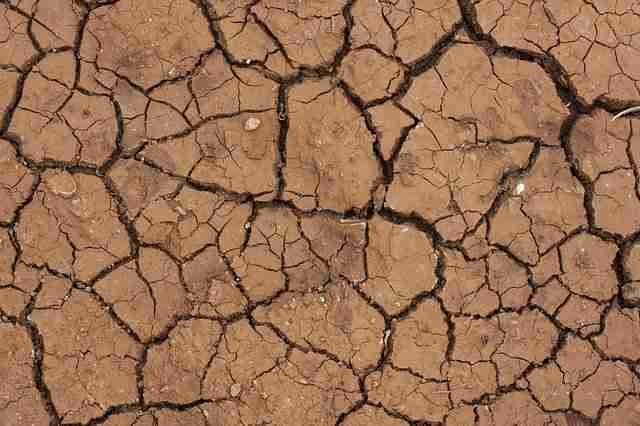Ready to get started? Let's go!
Next stop – PDQ1 – that means Pretty Darn Quick. Go dog, go!
CO2 here, there, and everywhere! Too much of a good thing is not so good sometimes!

Scan this QR Code with your Phyphox sensor app to load the CO2 sensor settings for all activities in the CO2 Science Series.
Too much of a good thing can hurt you.
Grades:
Time:
Subject:
5-8
50 minutes (PDQ’s + Experiment)
50 Minutes (Challenge & Collaboration)
Environmental Science
Join databot™ in an exploration of the complex nature of our climate, greenhouse gases, and the amazing carbon storing capabilities of our friends, the trees.
Our global climate is a highly complex system with many factors impacting it. One of the substances that impacts our climate is carbon dioxide, a gas that we exhale, is formed naturally in volcanoes, and is emitted naturally by animals and plants. When in equilibrium, the natural absorption of CO2 is matched by the production of CO2 and our planetary temperature remains stable.
Due to the rapid growth and expansion of a number of man-made sources of CO2 such as fossil-fuel burning vehicles, the production of CO2 has outpaced the natural absorption capacity of our planet since 1959. The result of high levels of CO2 is global warming, a planet-wide shift in climate.
Let’s explore our CO2 levels in the air outside and also investigate some properties of CO2 to better understand why it is called a greenhouse gas. Are there ways to reduce our global CO2 levels and counter some of the planet-wide effects of global warming? Let’s explore further with databot™!

By completing this experiment and conducting the scientific observations associated with it you will master the following knowledge! Good luck science explorer!
Carbon: A highly abundant, incredibly important chemical element with the symbol C that, due to its unique ability to form bonds, serves as a common element to all known life. All life that we know of we refer to as “carbon-based” and our human body is made up of approximately 18.5% carbon.
Carbon Dioxide (CO2): A colorless, odorless gas comprised of oxygen and carbon that is naturally present in the air you breathe and is absorbed by plants in photosynthesis.
Carbon Sequestration: In response to CO2 driven temperature increases, carbon sequestration proposes the long term storage of carbon in solid or liquid form to remove it from the atmosphere. Trees and forests are a natural method of carbon sequestration as they convert CO2 into usable carbon through photosynthesis. A tree trunk is a massive carbon storage vessel for example.
Climate: The weather over a prolonged period of time in a region is called climate.
Climate Change: A change in global or regional weather patterns. Global climate change is linked to the steady increase of CO2, a gas that traps heat, in our atmosphere.
Deforestation: The permanent removal of forested areas and converting the land use to housing, farming, or other applications is called deforestation. Deforestation should not be confused with the organized harvesting of forests, a renewable resource.
Global Warming: The ongoing rise in the average temperatures around the world is called global warming and is linked to an excess of greenhouse gases such as CO2.
Greenhouse Gases: Gases in our atmosphere that absorb and radiate heat energy are called greenhouse gases as they contribute to a global warming effect. The greenhouse gases in our atmosphere are water vapor, carbon dioxide, methane, nitrous oxide, and ozone.
Photosynthesis: The chemical process in plants, driven by sunlight, that absorbs carbon dioxide from the air and combines it with water to provide the carbon needed by the plant to form complex molecules that enable it to grow and repair itself. Glucose, its source of energy, is one of these complex molecules.
Read the background information and learning objectives, study the terms, and explore the additional resource links.
Next stop – PDQ1 – that means Pretty Darn Quick. Go dog, go!
Educator Info
If you have not scanned the Phyphox QR code for this or other CO2 science modules yet, please do so. This will load all the required sensor settings that are used in The Cave of Dogs; Ready, Set, Reaction; Breathe; You’re Getting Warmer; and Something in the Air. Note: If you scan this QR code twice it will add duplicates of each sensor setting. You can delete them using the delete function.
The following learning objectives are emphasized in this module:
 You’re Getting Warmer! by Robert O. Grover & Team databot™ is licensed under a Creative Commons Attribution 4.0 International License. Permissions beyond the scope of this license may be available at databot.us.com/contact.
You’re Getting Warmer! by Robert O. Grover & Team databot™ is licensed under a Creative Commons Attribution 4.0 International License. Permissions beyond the scope of this license may be available at databot.us.com/contact.